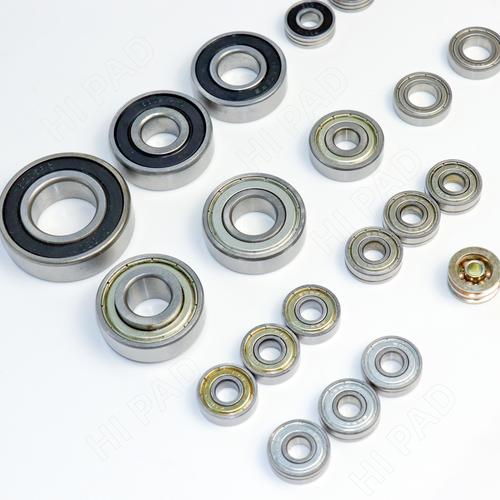Top 5 Factors to Consider When Choosing Bearings and Bushings Manufacturers for Industrial Applications
Bearings and bushings are critical components in machinery, reducing friction and ensuring smooth operation across industries like automotive, aerospace, and manufacturing. Selecting the right bearings and bushings manufacturers directly impacts equipment longevity and performance. This guide explores essential considerations for sourcing these components effectively.
Table of Contents
1. Types of Industrial Bearings and Their Applications2. Bushing Materials for High-Temperature Environments
3. How to Verify ISO Certification in Bearing Manufacturers
4. Custom Bushing Solutions for Heavy Machinery
5. Preventive Maintenance Strategies for Bushings
1. Types of Industrial Bearings and Their Applications

Ball bearings, roller bearings, and plain bearings serve distinct purposes in machinery. Ball bearings excel in high-speed applications like electric motors, handling radial and axial loads efficiently. Tapered roller bearings are ideal for automotive wheel hubs due to their capacity to manage combined loads. Manufacturers specializing in ceramic hybrid bearings cater to extreme-temperature applications in aerospace. Leading producers combine advanced metallurgy with precision grinding tolerances under 0.0001 inches. Recent innovations include self-lubricating bearings for maintenance-free operation in remote installations.
2. Bushing Materials for High-Temperature Environments
Bronze bushings remain popular for general-purpose applications, but sintered bronze impregnated with lubricant outperforms in high-load scenarios. Polymer-based bushings using PTFE or PEEK materials withstand temperatures up to 500°F while maintaining low friction coefficients. Leading manufacturers now offer graphite-embedded bushings for extreme heat conditions in metal forming presses. Material selection must consider PV limits (pressure x velocity) to prevent premature wear. Custom manufacturers provide material testing certificates confirming heat resistance properties and load-bearing capacities.
3. How to Verify ISO Certification in Bearing Manufacturers
Authentic ISO 9001 certification ensures consistent bearing quality through documented production controls. Manufacturers must display valid certification numbers on their websites, verifiable through the International Accreditation Forum database. Critical audit points include raw material traceability, statistical process control implementation, and final inspection protocols. Reputable manufacturers undergo annual surveillance audits, with certification bodies like DNV or BSI being most credible. Always request mill test reports cross-referenced with heat treatment batch numbers for critical applications.
4. Custom Bushing Solutions for Heavy Machinery
OEMs requiring non-standard bushing dimensions benefit from manufacturers offering CNC machining and prototyping services. Custom flanged bushings with lubrication grooves improve performance in hydraulic systems. Some suppliers provide reverse-engineering services for obsolete equipment components. Advanced manufacturers utilize finite element analysis (FEA) to optimize wall thickness and stress distribution. Case hardening processes like carburizing or nitriding enhance surface durability for mining equipment bushings. Lead times for custom orders typically range from 4-6 weeks with proper technical documentation.
5. Preventive Maintenance Strategies for Bushings
Vibration analysis effectively detects early bushing wear patterns in rotating equipment. Manufacturers recommend lubrication intervals based on operational hours and contamination levels. Ultrasonic thickness gauging monitors bushing wall erosion in corrosive environments. Proper installation using arbor presses prevents ovalization defects. Leading suppliers provide maintenance training programs covering alignment techniques and lubrication best practices. Implementing predictive maintenance can extend bushing service life by 40-60% in harsh operating conditions.
Understanding bearing types, material science, certification protocols, customization options, and maintenance practices enables informed decisions when selecting industrial component suppliers. The following sections detail how top manufacturers address these critical aspects through advanced engineering and quality assurance measures. Discover why leading global enterprises prioritize these factors when sourcing mission-critical components.
This comprehensive guide has explored vital considerations for partnering with bearings and bushings manufacturers. From material selection to certification verification and maintenance planning, each factor contributes to operational efficiency and equipment reliability. Partnering with technically proficient manufacturers ensures access to innovative solutions that reduce downtime and total cost of ownership.




 13869596835
13869596835